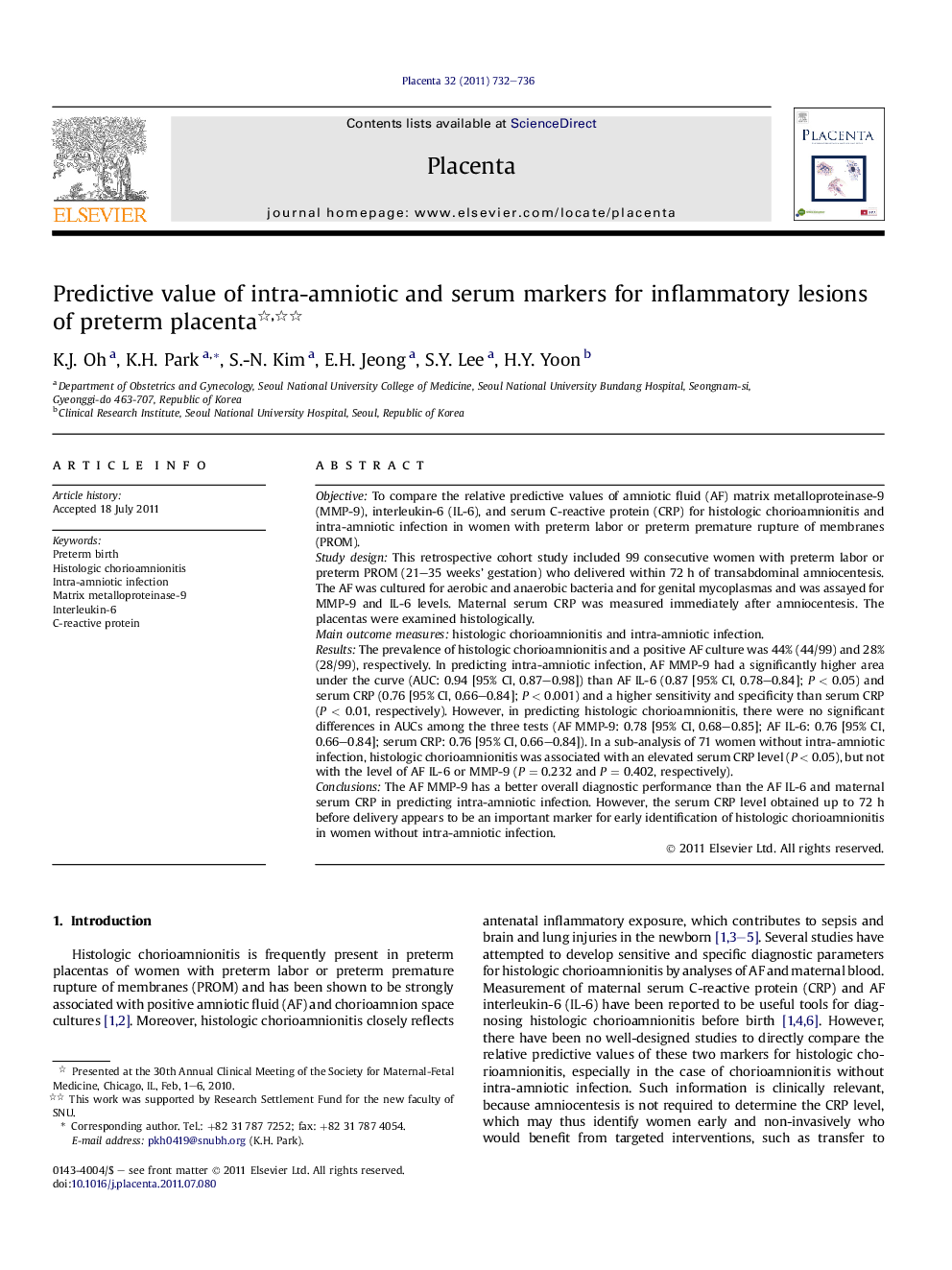| Article ID | Journal | Published Year | Pages | File Type |
|---|---|---|---|---|
| 2789354 | Placenta | 2011 | 5 Pages |
ObjectiveTo compare the relative predictive values of amniotic fluid (AF) matrix metalloproteinase-9 (MMP-9), interleukin-6 (IL-6), and serum C-reactive protein (CRP) for histologic chorioamnionitis and intra-amniotic infection in women with preterm labor or preterm premature rupture of membranes (PROM).Study designThis retrospective cohort study included 99 consecutive women with preterm labor or preterm PROM (21–35 weeks’ gestation) who delivered within 72 h of transabdominal amniocentesis. The AF was cultured for aerobic and anaerobic bacteria and for genital mycoplasmas and was assayed for MMP-9 and IL-6 levels. Maternal serum CRP was measured immediately after amniocentesis. The placentas were examined histologically.Main outcome measureshistologic chorioamnionitis and intra-amniotic infection.ResultsThe prevalence of histologic chorioamnionitis and a positive AF culture was 44% (44/99) and 28% (28/99), respectively. In predicting intra-amniotic infection, AF MMP-9 had a significantly higher area under the curve (AUC: 0.94 [95% CI, 0.87–0.98]) than AF IL-6 (0.87 [95% CI, 0.78–0.84]; P < 0.05) and serum CRP (0.76 [95% CI, 0.66–0.84]; P < 0.001) and a higher sensitivity and specificity than serum CRP (P < 0.01, respectively). However, in predicting histologic chorioamnionitis, there were no significant differences in AUCs among the three tests (AF MMP-9: 0.78 [95% CI, 0.68–0.85]; AF IL-6: 0.76 [95% CI, 0.66–0.84]; serum CRP: 0.76 [95% CI, 0.66–0.84]). In a sub-analysis of 71 women without intra-amniotic infection, histologic chorioamnionitis was associated with an elevated serum CRP level (P < 0.05), but not with the level of AF IL-6 or MMP-9 (P = 0.232 and P = 0.402, respectively).ConclusionsThe AF MMP-9 has a better overall diagnostic performance than the AF IL-6 and maternal serum CRP in predicting intra-amniotic infection. However, the serum CRP level obtained up to 72 h before delivery appears to be an important marker for early identification of histologic chorioamnionitis in women without intra-amniotic infection.
